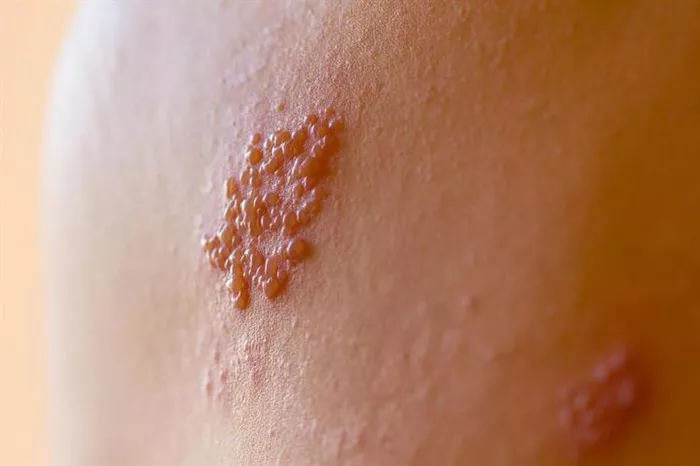Postherpetic neuralgia (PHN) is a chronic pain condition that occurs after a shingles infection. It can be extremely uncomfortable and difficult to manage, but there are several treatments that can help reduce the pain and improve quality of life. This article will explain the best treatments for PHN, including medications, therapies, and lifestyle changes.
What Is Postherpetic Neuralgia?
Postherpetic neuralgia is a complication that can develop after a person has had shingles, which is caused by the varicella-zoster virus (the same virus that causes chickenpox). After the shingles rash heals, some people experience persistent nerve pain in the affected area, which can last for months or even years.
The pain from PHN can be burning, stabbing, or aching. It often affects the skin where the shingles rash occurred, typically on the chest, back, or face. This pain is caused by nerve damage from the shingles infection. People with weakened immune systems or those over the age of 60 are more likely to develop PHN.
Medications for Treating Postherpetic Neuralgia
Several medications are available to manage the pain of PHN. The goal of medication is to reduce the intensity of pain and improve daily function.
Antidepressants Antidepressants are often used to treat PHN pain, even in people who are not depressed. Certain types of antidepressants, especially tricyclic antidepressants (TCAs), such as amitriptyline, have been found to reduce nerve pain. These medications help by affecting the neurotransmitters that transmit pain signals.
TCAs can cause side effects like drowsiness, dry mouth, and blurred vision, but these effects often improve over time. Other types of antidepressants, such as serotonin-norepinephrine reuptake inhibitors (SNRIs), like duloxetine, can also help with PHN.
Anticonvulsants Anticonvulsants, such as gabapentin (Neurontin) and pregabalin (Lyrica), are commonly used to treat nerve pain. These drugs work by calming overactive nerve signals and can be very effective in treating PHN. They help reduce the pain intensity and can improve the overall quality of life.
Side effects of anticonvulsants may include dizziness, fatigue, and weight gain. It’s important to take these medications as prescribed and follow up with your doctor if any problems arise.
Topical Treatments Topical treatments, such as lidocaine patches or capsaicin cream, can be applied directly to the painful area to provide relief. Lidocaine is a numbing agent that blocks the transmission of pain signals. It’s usually well tolerated and has minimal side effects.
Capsaicin cream works by depleting a neurotransmitter involved in sending pain signals. This treatment may take a few weeks to show full results, but it can be effective in reducing pain for some people.
Opioids In severe cases, opioids like morphine or oxycodone may be prescribed for short-term pain relief. However, opioids are not typically recommended for long-term use due to the risk of dependency and side effects. They may be considered when other treatments have not been effective.
Corticosteroids Corticosteroids, like prednisone, can be used to reduce inflammation and pain. They are typically used for short periods of time to manage flare-ups. Long-term use of steroids can have serious side effects, so they should be used carefully and under a doctor’s supervision.
Nerve Blocks and Other Procedures
For people with PHN who do not respond to medications, certain procedures may help alleviate pain.
Nerve Blocks A nerve block is an injection of anesthetic or steroid into the affected area near the nerve. It temporarily interrupts the pain signals sent by the nerves and can provide relief for days to weeks. Nerve blocks are often used when other treatments have not been effective.
Transcutaneous Electrical Nerve Stimulation (TENS) TENS is a therapy that uses low-voltage electrical impulses to reduce pain. A TENS device is a small, portable machine that sends electrical impulses to the skin through electrodes. This helps to block pain signals and can be used at home. Many people find it to be helpful for managing nerve pain.
Spinal Cord Stimulation For severe PHN pain that does not respond to other treatments, spinal cord stimulation may be an option. This involves implanting a small device that sends electrical impulses to the spinal cord. The impulses interfere with the nerve signals that cause pain, offering relief. Spinal cord stimulation is usually considered after other treatments have been tried without success.
Lifestyle Changes and Home Remedies
In addition to medications and procedures, there are several lifestyle changes and home remedies that can help manage the symptoms of PHN.
Healthy Diet Eating a balanced diet can support overall health and may help reduce inflammation. Some studies suggest that certain foods, like those rich in omega-3 fatty acids (found in fish like salmon) and antioxidants (found in fruits and vegetables), may have anti-inflammatory effects. A diet that promotes good health can improve the body’s ability to manage pain.
Regular Exercise Regular physical activity can help keep the body strong and reduce stress, which can contribute to pain. Gentle exercises, such as walking or swimming, can be beneficial. Always consult with a doctor before starting an exercise routine, especially if you are dealing with chronic pain.
Stress Management Stress can make pain worse, so managing stress is important for people with PHN. Techniques like meditation, deep breathing exercises, and mindfulness can help reduce stress levels and may improve pain tolerance. Yoga and tai chi are also excellent for managing stress while promoting relaxation.
Warm and Cold Compresses Applying heat or cold to the affected area can provide temporary relief from pain. A warm compress can help soothe aching muscles, while a cold compress can numb the area and reduce inflammation. Experimenting with both can help determine which works best for your pain.
Sleep Hygiene Adequate rest is essential for the body’s healing process. Poor sleep can worsen the perception of pain. Practicing good sleep hygiene, such as maintaining a regular sleep schedule, avoiding caffeine, and creating a comfortable sleeping environment, can improve sleep quality and overall well-being.
Prevention of Postherpetic Neuralgia
While PHN cannot always be prevented, there are steps you can take to lower your risk of developing it after shingles.
Shingles Vaccine The most effective way to reduce the risk of PHN is by getting the shingles vaccine. The vaccine, called Shingrix, is recommended for adults over 50 years old. It significantly reduces the risk of developing shingles and the severity of its symptoms. Even if you have had shingles before, you can still get the vaccine to reduce the risk of recurrence.
Early Treatment of Shingles Early treatment of shingles with antiviral medications can help reduce the severity of the infection and the risk of complications like PHN. If you develop shingles symptoms, such as a painful rash, it’s important to see a doctor as soon as possible. Antiviral medications, such as acyclovir, valacyclovir, or famciclovir, can help speed up recovery and prevent nerve damage.
Conclusion
Postherpetic neuralgia is a painful condition that can significantly impact daily life. Fortunately, there are many treatment options available to help manage the pain and improve quality of life. Medications, such as antidepressants, anticonvulsants, and topical treatments, are commonly used to reduce pain. In more severe cases, procedures like nerve blocks and spinal cord stimulation may be considered. Lifestyle changes, including regular exercise, stress management, and maintaining a healthy diet, can also help manage symptoms.
If you are experiencing PHN, it’s important to work closely with your healthcare provider to develop a personalized treatment plan. Early intervention and proper management can make a significant difference in the outcome of the condition.
Related topics:



























